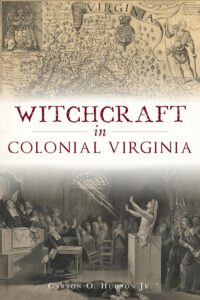NOTE: THIS WEBSITE IS A WORK IN PROGRESS. RESOURCES AND DATA ARE ADDED DAILY.
IMPORTANT: We are in urgent need of funding to keep this project alive and ensure its future. If you’re enjoying the site and see our vision for the project, please consider joining as a paid member or contributing to our crowdfunding campaign today. It is only with your help that we can continue this work.
Thanks so much for your support! – Jes
![]()
Witchcraft in Colonial Virginia
share:
Some buttons on this page link to external websites. If you visit one of our affiliate sites and make a purchase, I may receive a small commission at no extra cost to you. More info
- UPDATED: 6.17.2025
- History, Women, Regional, Culture
- colonial America, witchcraft
author:
Carson O. Hudson
editor:
n/a
publisher:
date:
8.26.2019
ISBN:
9781467144247
pages:
144
notes:
contents:
description:
Colonial Virginians shared a common belief in the supernatural with their northern neighbors. While the witchcraft mania that swept through Salem, Massachusetts, in 1692 was significant, fascination with it has tended to overshadow the historical records of other persecutions throughout early America. The 1626 case of Joan Wright, the first woman to be accused of witchcraft in British North America, began Virginia's own witch craze. Utilizing surviving records, author, local historian and Emmy Award-winning screenwriter Carson Hudson narrates these fascinating stories.
ancestors:
surnames:
places:
CMOS:
author-date:

